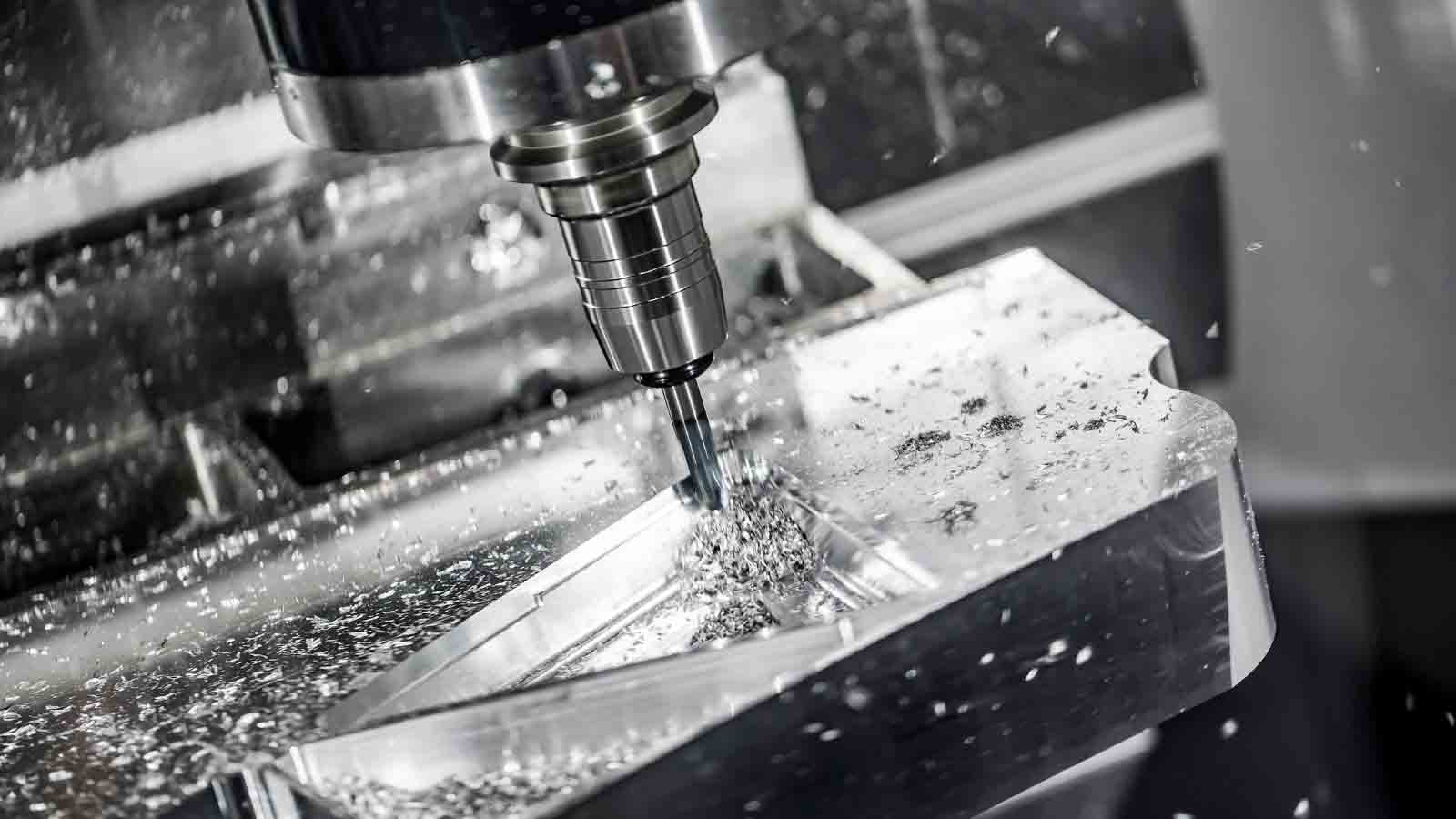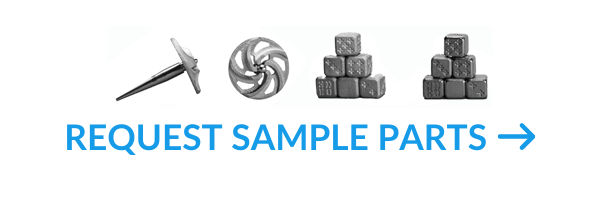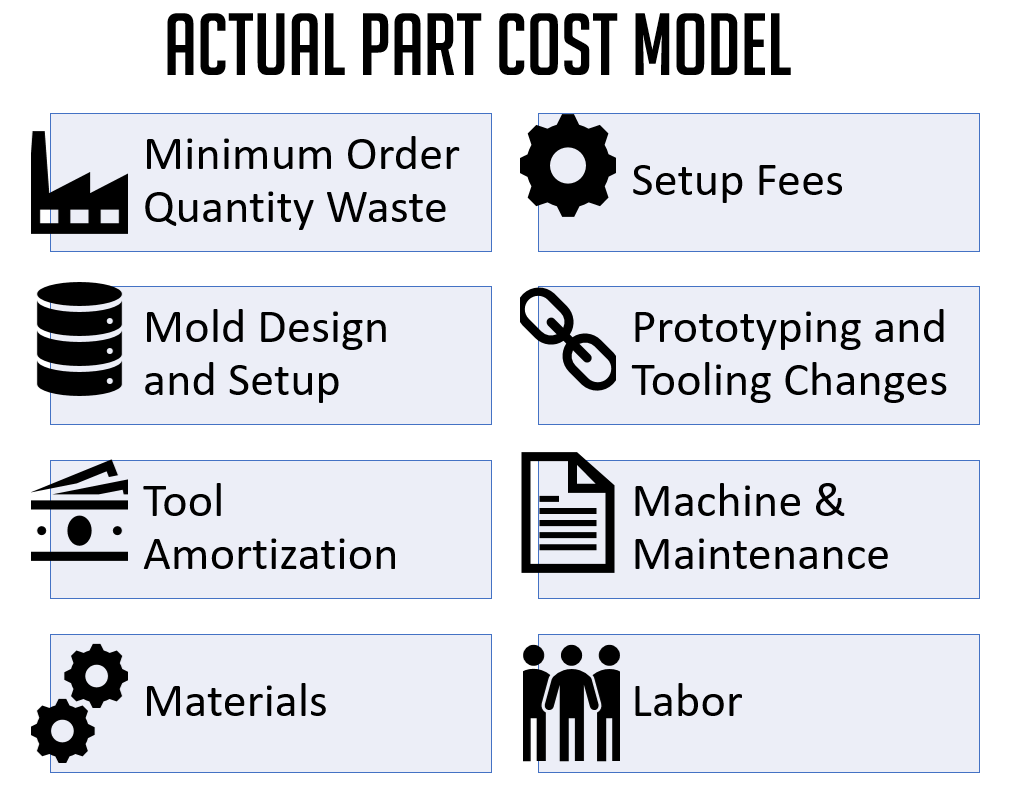 Product development teams have long relied on the metal injection molding or casting processes to manufacture metal parts for decades. This time-tested process is robust, highly repeatable, and ideal for high-volume production. However, when engineering development teams think about the cost of manufacturing using injection molding, they typically think of the costs only in terms of direct materials, machine time, and direct labor costs (see Traditional Part Cost Model image). This conventional cost model, although intuitive, does not capture the true total costs associated with manufacturing a part using metal injection molding or casting.
Product development teams have long relied on the metal injection molding or casting processes to manufacture metal parts for decades. This time-tested process is robust, highly repeatable, and ideal for high-volume production. However, when engineering development teams think about the cost of manufacturing using injection molding, they typically think of the costs only in terms of direct materials, machine time, and direct labor costs (see Traditional Part Cost Model image). This conventional cost model, although intuitive, does not capture the true total costs associated with manufacturing a part using metal injection molding or casting.
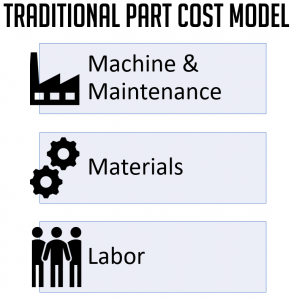
In reality, mechanical engineers, tooling technicians, and product development teams typically find that the actual costs to manufacture using traditional manufacturing methods are significantly higher than what the conventional model captures. Specifically, this approach misses five additional cost elements associated with injection molding: (1) tool amortization, (2) prototyping and tooling change, (3) mold design and setup, (4) setup fees, and (5) minimum order quantity (MOQ) inventory waste (see Actual Part Cost Model).
After decades of production experience, traditional manufacturing such as die casting, sand casting, and metal injection molding process are well-characterized. However, the true costs associated with producing a metal part are not as well-understood. Typically, the costs associated with tooling amortization and tooling changes during the prototyping stage are not considered in initial production estimates. These tooling-related costs add up quickly, driving up the total cost as each retooling change can add $25,000 – $100,000 to the cost, depending on the application.
The time and labor associated with design for injection molding represent important costs that are generally not factored into the total cost. In order to be feasible for manufacturing, mold design requires the correct application of critical design elements such as parting line location, shutoffs, drafts, fillets, gates, and ejector pins. Additionally, the complexity of intricate geometries, textures, and variable wall thickness requirements for a given part can become a considerable cost and time multiple. Setup fees reflect the time and labor it takes to mount the mold into a molding machine, pre-cycle, and calibrate the molding operation. This can be a significant additional cost for most short-run manufacturing operations.
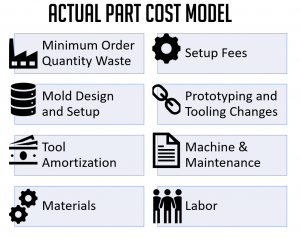
Lastly, a natural outcome of the high tooling costs associated with injection molding is the tendency for the process to be chosen for high volume production applications to amortize the upfront tooling cost. However, this volume amortization does not work for many product development teams, since contract manufacturers often hide steep tooling costs under a minimum order quantity (MOQ) requirement. This requirement means that product development teams must often order parts in the thousands, even though they might only need a few hundred units. The MOQ also puts pressure on organizational operations and supply chain teams as it can introduce inventory holding costs and associated wastage of parts. The National Institute of Standards and Technology reported that over $537 billion was tied up in inventory in 2011. This number has likely grown over the years. With additive manufacturing and the ability to produce on-demand, the perfect solution to reduce inventory holding costs and associated wastage is now within reach.
Metal Part Manufacturing Cost of Time to Market
Product development teams today have found it incredibly difficult to launch new products on time due to frequent delays throughout the end-to-end manufacturing process. Iterating quickly and staying on schedule is important for any industry vertical, but it is often more pronounced in highly competitive industries, such as consumer products or industrial electronics. In these markets, delays in meeting time-to-market expectations can result in lost revenue and lost market share against key competitors. In the case of industrial electronics, delays often translate into a part being designed out of the final product altogether, with implications of multiple years of revenue loss.
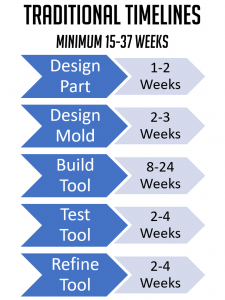 As highlighted in the Traditional Timelines image, development timelines can be lengthy with a significant variability that ranges from 15 to 37 weeks. The addition of design for molds and tooling, and correcting errors can add anywhere between 4 to 16 weeks to the end-to-end process. Also, the tool-building step represents the highest variability; 8 to 24 weeks is typical for completion, depending on where the tool is being made (outsourced vs. in-house). To develop an accurate estimate, engineers who want to make metal parts must consider time and variability when they are evaluating manufacturing process options.
As highlighted in the Traditional Timelines image, development timelines can be lengthy with a significant variability that ranges from 15 to 37 weeks. The addition of design for molds and tooling, and correcting errors can add anywhere between 4 to 16 weeks to the end-to-end process. Also, the tool-building step represents the highest variability; 8 to 24 weeks is typical for completion, depending on where the tool is being made (outsourced vs. in-house). To develop an accurate estimate, engineers who want to make metal parts must consider time and variability when they are evaluating manufacturing process options.
Benefits of Metal 3D Printing
For customers new to the world of additive manufacturing, metal 3D printing (additive manufacturing) technology offers the following benefits that are inherent to true additive manufacturing: (a) lower upfront costs compared to traditional manufacturing techniques such as investment casting, sand casting, or metal injection molding, (b) agile part production, (c) the ability to iterate rapidly on design changes, and (d) significantly lower non-recurring engineering expenses. Additionally, there are business scenarios where injection molding is not the most efficient method to make final parts. This is where metal additive manufacturing (3D printing) like 3DEO’s technology is truly differentiated. Some of these scenarios are:
- Impossible-to-mold geometries (i.e. complex parts with intricate channels, holes, and recesses)
- Differentiated functional performance unique to metal 3D printing
- Part consolidation (i.e. 3D printed single part instead of multiple part assemblies, simpler assembly lines)
- Leaner supply chain (i.e. parts-on-demand, reduced supplier dependencies)
We already see numerous industrial and consumer product companies using metal 3D printing technology to serve parts on-demand instead of sourcing or maintaining injection molding parts, especially for low-volume parts. Compared to the long lead time typical with traditional manufacturing, with metal additive manufacturing it is possible to collapse the production process to less than 2 weeks with much lower variability.
Additionally, metal additive manufacturing technology offers engineers and product development teams new design freedom to rethink their product designs. Overall, 3DEO’s capabilities are complementary to traditional manufacturing techniques, and customers should decide which approach serves them best for their end application or use-case. Most importantly, they should be sure that they truly understand the total cost of manufacturing before making a decision.

